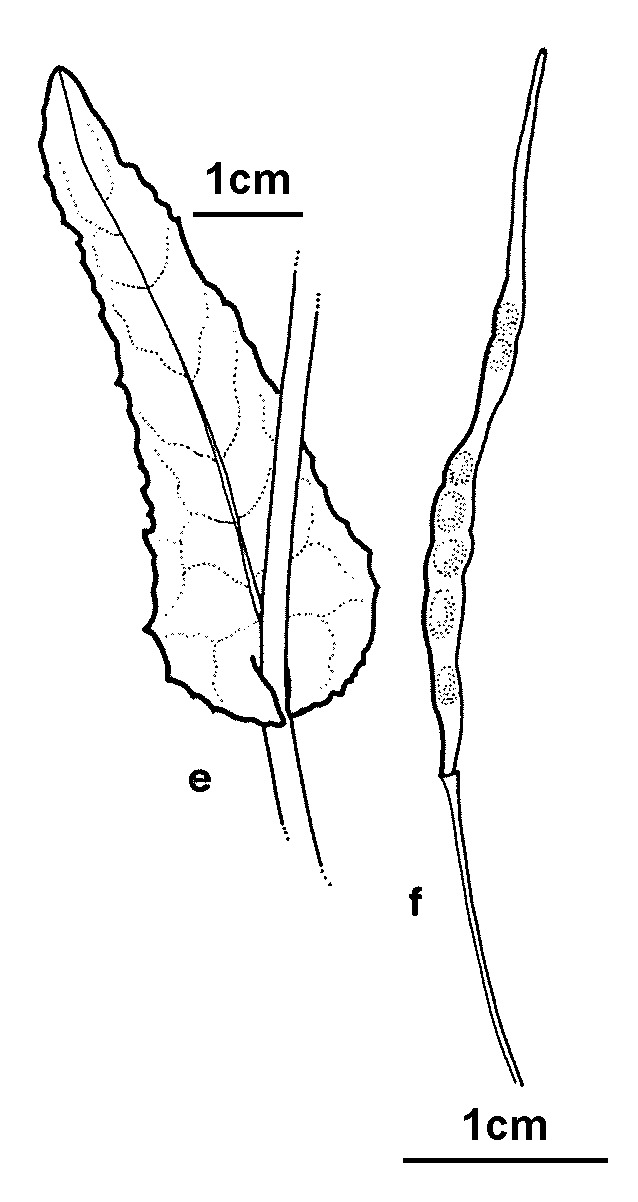Brassica ×napus
L. RapeAnnual or biennial. Taproot robust, often tuberous. Stems erect, to 1.5 m high, herbaceous; basal leaf scars inconspicuous, glabrous. Leaves scarcely fleshy, glaucous; lower leaves petiolate, to 40 cm long, deeply lobed, with a large terminal lobe and smaller lateral ones, sparsely bristly; upper leaves sessile, oblong-lanceolate, the base broadened, clasped around more than half of the stem. Inflorescence with buds overtopping (rarely equalling) the flowers. Sepals inclined, 5–7 mm long; petals 11–14 mm long, pale yellow; outer stamens with filaments curved outwards at base; ovary sessile. Fruit ascending, 4–10 cm long (including beak), 2–4 mm wide, quadrangular (valves flattened between midrib and margin); beak 5–30 mm long, with 0 or 1 seed; pedicel 15–30 mm long; seeds 1–3 mm wide, dark brown to black. Flowers spring.
MuM, Wim, VVP, VRiv, GipP, WaP, CVU, HSF. Naturalised all States except NT. Origin unknown, probably derived from a Brassica oleracea and B. rapa hybrid in Europe. An occasional escape from cultivation in Victoria and possibly naturalised.
Cultivated as a vegetable and for stock fodder. Seedlings used in salads as 'cress', in place of Lepidium sativum.
Entwisle, T.J. (1996). Brassicaceae. In: Walsh, N.G.; Entwisle, T.J., Flora of Victoria Vol. 3, Dicotyledons Winteraceae to Myrtaceae, pp. 399–459. Inkata Press, Melbourne.
 Spinning
Spinning